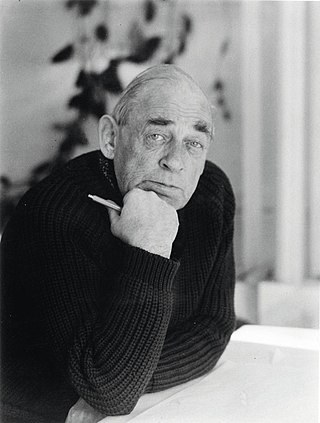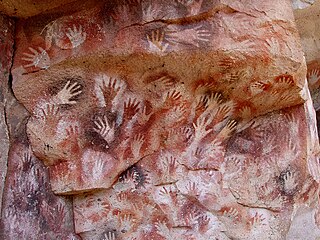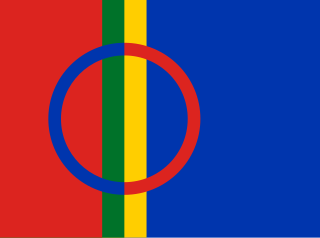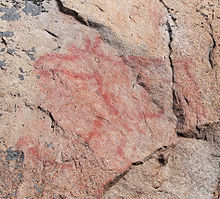
Hugo Alvar Henrik Aalto was a Finnish architect and designer. His work includes architecture, furniture, textiles and glassware, as well as sculptures and paintings. He never regarded himself as an artist, seeing painting and sculpture as "branches of the tree whose trunk is architecture." Aalto's early career ran in parallel with the rapid economic growth and industrialization of Finland during the first half of the 20th century. Many of his clients were industrialists, among them the Ahlström-Gullichsen family, who became his patrons. The span of his career, from the 1920s to the 1970s, is reflected in the styles of his work, ranging from Nordic Classicism of the early work, to a rational International Style Modernism during the 1930s to a more organic modernist style from the 1940s onwards.

In archaeology, cave paintings are a type of parietal art, found on the wall or ceilings of caves. The term usually implies prehistoric origin. These paintings were often created by Homo sapiens, but also Denisovans and Neanderthals; other species in the same Homo genus. Discussion around prehistoric art is important in understanding the history of the Homo sapiens species and how Homo sapiens have come to have unique abstract thoughts. Some point to these prehistoric paintings as possible examples of creativity, spirituality, and sentimental thinking in prehistoric humans.

Pekka Halonen was a Finnish painter of landscapes and people in the national romantic and Realist styles.

Jyväskylä is a city in Finland and the regional capital of Central Finland. It is located in the Finnish Lakeland. The population of Jyväskylä is approximately 149,000, while the sub-region has a population of approximately 193,000. It is Finland's 7th most populous municipality, and fifth most populous urban area.

Seinäjoki is a city in Finland and the regional capital of South Ostrobothnia. Seinäjoki is located in the western interior of the country and along the River Seinäjoki. The population of Seinäjoki is approximately 67,000, while the sub-region has a population of approximately 132,000. It is the 16th most populous municipality in Finland, and the 13th most populous urban area in the country.

Katajanokka is a neighbourhood of Helsinki, Finland, with around 4000 inhabitants in 2005. The district is located adjacent to the immediate downtown area, though in the first major town plan for Helsinki from the mid-18th century, the area fell outside the fortifications planned to encircle the city.

JYP is an ice hockey team playing in the Finnish top division Liiga. They play in Jyväskylä, Finland, at the LähiTapiola Areena.

Laukaa is a municipality of Finland. It is located next to Jyväskylä and is part of the Central Finland region. The municipality has a population of 18,869 and covers an area of 825.59 square kilometres (318.76 sq mi) of which 177.09 km2 (68.37 sq mi) is water. The population density is 29.1 inhabitants per square kilometre (75/sq mi).

In archaeology, rock arts are human-made markings placed on natural surfaces, typically vertical stone surfaces. A high proportion of surviving historic and prehistoric rock art is found in caves or partly enclosed rock shelters; this type also may be called cave art or parietal art. A global phenomenon, rock art is found in many culturally diverse regions of the world. It has been produced in many contexts throughout human history. In terms of technique, the four main groups are:

Lake Päijänne is the second largest lake in Finland. The lake drains into the Gulf of Finland via the Kymi River. The major islands are from north to south Vuoritsalo, Muuratsalo, Onkisalo, Judinsalo, Edessalo, Taivassalo, Haukkasalo, Vehkasalo, Mustassalo, Virmailansaari and Salonsaari. The largest island is Virmailansaari. The word saari means an island. Salo once meant a great island, nowadays it means a great forest area.

Jyväskylän Jalkapalloklubi, commonly referred to as JJK Jyväskylä or simply JJK, is a Finnish football club, based in Jyväskylä. JJK plays its home matches at Harjun Stadion.
The Subneolithic is an archaeological period sometimes used to distinguish cultures that are transitional between the Mesolithic and the Neolithic. Subneolithic societies typically adopted some secondary elements of the Neolithic package, but retained economies based on hunting and gathering and fishing instead of agriculture. For the most part they were sedentary. The Subneolithic dates to the period 5000/4000–3200/2700 BCE in Scandinavia, north and north-eastern Europe.

The Astuvansalmi rock paintings are located in Ristiina, Mikkeli, Southern Savonia, Finland at the shores of the lake Yövesi, which is a part of the large lake Saimaa. The paintings are 7.7 to 11.8 metres above the water-level of lake Saimaa. The lake level was much higher at the time the rock paintings were made. There are about 70 paintings in the area.

Finnish rock art pictographs created during the Stone Age have been found at 127 sites around Finland. They consist mainly of brownish-red figures and markings painted onto steep granite walls, often overlooking waterways. There are scenes featuring people, boats, elk, fish and mysterious part human figures. The survival of the art in adverse climatic conditions is due to their protection by a naturally forming thin layer of silicon dioxide on the rock surface.

Saraavesi is a medium-sized lake in Laukaa, Finland. It flows to lake Leppävesi via Kuhankoski rapids. The lake is part of Keitele Canal, a waterway connecting Lake Keitele and Päijänne. Saraakallio rock paintings are located on the shore of Saraavesi.

Inari or Aanaar Sámi are a group of Sámi people who inhabit the area around Lake Inari, Finland. They speak the Inari (Aanaar) Sámi language, which belongs to the eastern Sámi languages. There are an estimated 700–900 ethnic Inari Sámi in Finland, of whom approximately 300–400 speak Inari Sámi. They are the only group of Sámi who live within one state and one municipality. Inari Sámi are indigenous peoples of their area.

Taulumäki Church is the principal Lutheran church in Jyväskylä, the administrative centre of the Central Finland region. Designed by architect Elsi Borg (1893–1958), its construction began in 1928. The church was inaugurated on October 27, 1929, and replaces the 1885 church designed by Ludvig Isak Lindqvist, which had burned down on January 27, 1918.

Kuokkala is a ward of Jyväskylä, Finland. It contains six districts: Ristonmaa, Kuokkala, Kuokkalanpelto, Ristikivi, Nenäinniemi and Hämeenlahti. As of July 2012, 17,270 people live in Kuokkala.

The Cave of the Beasts is a huge natural rock shelter in the Western Desert of Egypt featuring Neolithic rock paintings, more than 7,000 years old, with about 5,000 figures.

Finnish art started to form its individual characteristics in the 19th century, when romantic nationalism began to rise in the autonomous Grand Duchy of Finland.




















